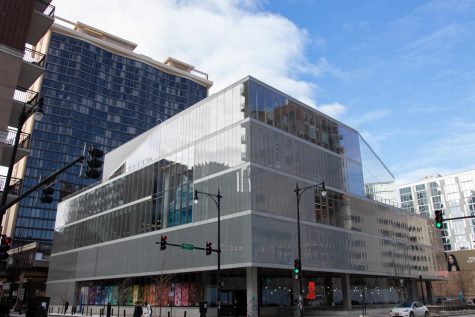When did we become just a number?
March 30, 2015
When I was immersed in my search for the perfect college—the first time when I was a senior in high school, the second as a transfer student from a community college—the possibilities seemed endless. The search was only complicated by the fact that what so many colleges claimed as “unique” was actually cookie-cutter. Every college had a “diverse” student body, a beautiful campus and access to the brightest minds in different academic fields.
Columbia stood out for several reasons, but its intimate class sizes with a promise of individual attention and chances to collaborate with fellow students were its most attractive traits. Rather than sit in monolithic lecture halls packed with hundreds of students, the majority of the college’s classes maxed out at 25 students, and those classes were typically general education courses.
In addition to providing individualized attention, the smaller class sizes made it clear that Columbia students were more than a number. It may have cost the college more, but it was an endurable hardship because students had access to the valuable knowledge instructors impart in their students.
It seems that ideal is not a shared sentiment, though. As detailed in the Front Page class size article, the college plans to increase enrollment caps in lecture-style classes, advancing the idea that one more student in each class has the potential to save $1 million.
Make no mistake, increasing class sizes is in no way for the betterment of the student body’s education. It is a cost-cutting technique utilized to pack more bodies into a classroom and slash names from the dwindling list of adjunct professors. Larger classes means fewer course sections offered, which in turn eliminates part-time positions.
Stan Wearden, senior vice president and provost, is quoted as saying there is little difference in lecturing to a class of 20 students than a class of 15 students. Having actually sat in a Columbia lecture-style class for an entire semester—unlike those making the decision to increase class sizes—there is a huge difference.
Larger class sizes make it harder to collaborate with fellow students or communicate with the professor. There is also the very real issue of the space constrictions of the college’s facilities. The urban campus credo is a wonderful sales point, but it also means there is little room to expand, leaving professors and students at the mercy of their cramped classrooms.
I have seen this firsthand in a class in the Humanities, History & Social Sciences Department. Rather than open additional sections, the department shuffled students into classes despite being at the 25-person cap. There isn’t enough room for everyone to sit at a desk, leaving students to scrounge for seats against the wall.
It is understandable that the college is looking at ways to save money. The college is operating at a level meant for 10,000 students, not the near 7,000 that are currently enrolled. But the logic behind some of its decisions remains mystifying, and there is little opportunity for students to voice their opinions about the matter.
Aside from being a collective of creative talent, there is little that separates Columbia from similar and cheaper colleges, public or private. The lauded pool of faculty working in the industry is shrinking. Student jobs are on the chopping block. Departments and programs have been hit with deep budget cuts, the effects of which will not be seen until next year.
And now the advantageous class sizes are going to be altered? It seems the college is flirting with the idea of offering a large public college education for a small, private college cost. The individual attention is what makes the college’s more than $40,000 cost of attendance seem tolerable. To change that is to once again exude the perceivable belief that students are just a number with dollar signs attached.










